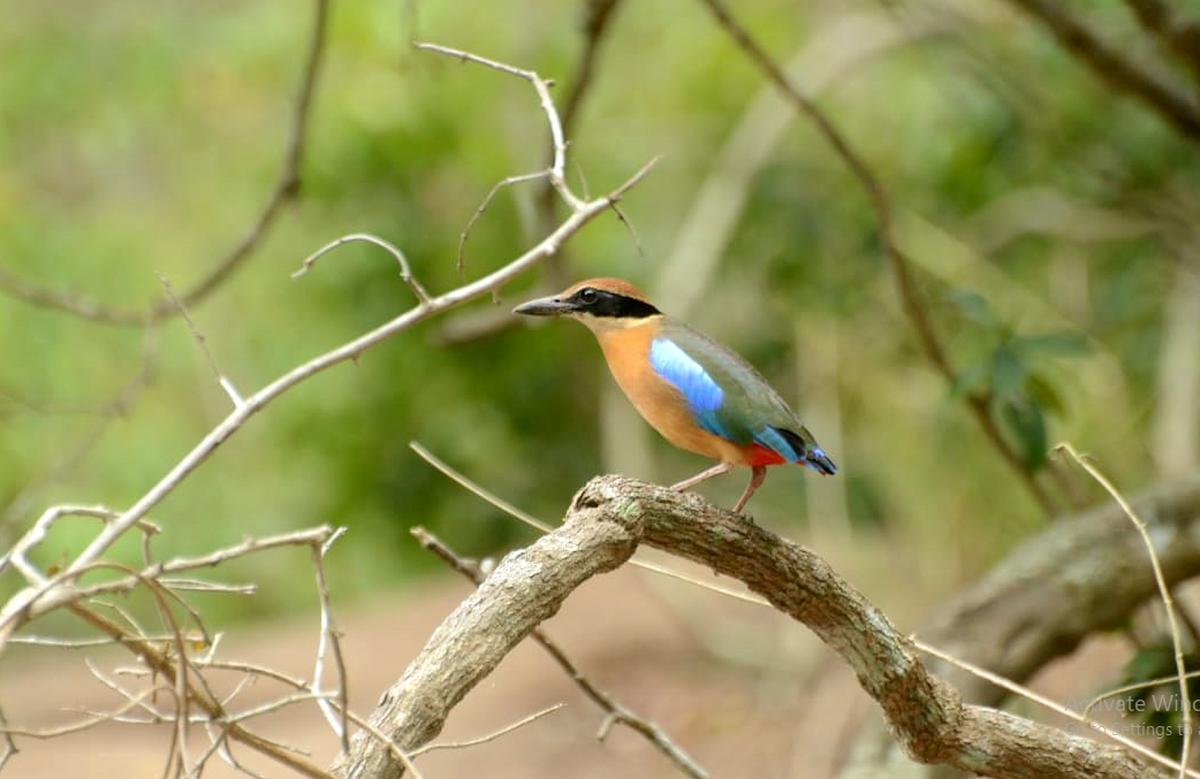News Highlight
First-ever census finds 179 mangrove pitta birds in two coastal Odisha districts.
Key Takeaway
- A census of mangrove pitta birds was done for the first time in two coastal districts of Odisha, producing 179 sightings.
- Mangrove pitta birds are a near-threatened species found in several eastern Indian locations, notably Odisha’s Bhitarkanika and West Bengal’s Sundarbans.
First-Ever Census of Mangrove Pitta Birds
- Overview
- Data on the distribution, habitat, and breeding of mangrove pittas along the coastal mangroves had been collected, and a baseline had been established for further population analyses.
- A total of 179 unique mangrove pitta birds were counted in this census.
- The biggest number of birds was discovered in the mangroves near the mouth of the Mahipura River within Bhitarkanika National Park.
- The birds were counted both directly and by their chirping.
- The census’s goal was to document the growth patterns of these birds.
- The census in the following years could reveal whether or not these species are vulnerable.
- These birds have not yet been designated as endangered.
Mangrove pitta
- About
- The Mangrove Pitta bird (Pitta megarhyncha) is in a few places in eastern India.
- It includes Odisha’s Bhitarkanika and West Bengal’s Sundarbans.
- The Mangrove Pitta bird is a ground forager and tree sitter that lives mainly in India’s coastal mangrove forests.
- IUCN Status
- The IUCN (International Union for Conservation of Nature) classified and rated the species as “Near Threatened.”
- Distribution
- India, Bangladesh, Myanmar, Thailand, Malaysia, Singapore, and Indonesia.
- Significance
- This species is significant because it is a bio-indicator of mangrove forest health.
- They are critical to preserving the natural equilibrium of coastal environments.
Bhitarkanika
- About
- After the Sunderbans, Bhitarkanika is India’s second-largest mangrove habitat.
- Bhitarkanika National Park is located in Odisha’s Kendrapara district.
- The park is primarily made up of wetlands and mangrove forests.
- In August 2002, it was designated as a Ramsar Site.
- A Ramsar Site is a wetland site classified as important internationally.
- These wetlands are protected under the rigorous restrictions of the Ramsar Convention on Wetlands.
- The Ramsar Convention on Wetlands, often known as the Wetlands Convention.
- It is an intergovernmental convention signed by UNESCO in the Iranian city of Ramsar in 1971 for the conservation and intelligent use of wetlands.
- The park is primarily a network of streams and canals saturated with water from Brahmani, Baitarani, Dhamra, and Patasala, providing a unique ecology.
- Bhitarkanika is home to the country’s largest endangered Salt Water Crocodile population.
- Aside from the Salt Water Crocodile, the park is home to various reptiles, such as the water monitor lizard and pythons, to name a few.
- Bhitarkanika is also home to various wildlife like deer, hyenas, wild boar, and migrating birds that visit throughout the winter, adding a bright hue to the ecosystem.
Mangroves
- About
- Mangroves are a type of tree and shrub that grows in the intertidal zone of the shore.
- All these trees thrive on low-oxygen soils with slow-moving streams that allow fine particles to build.
- Mangrove forests can only thrive near the equator in tropical and subtropical latitudes because they cannot resist freezing temperatures.
- Mangrove trees help to stabilise the shoreline, minimising erosion caused by storm surges, currents, waves, and tides.
- Mangrove forests especially appeal to fish and other species looking for food and protection from predators due to their extensive root system.
MISHTI (Mangrove Initiative for Shoreline Habitats & Tangible Incomes)
- The Union finance minister proposed several programmes for protection during the Budget speech 2023-24.
- As well as preserving India’s natural heritage, such as mangroves and wetlands.
- MISHTI is a new programme that will help to grow mangroves along India’s coastline and in salt pan areas.
- The programme will be funded by a “convergence of MGNREGS, CAMPA Fund, and other sources.”
- This new programme will focus on intense coastal mangrove forest afforestation.
- Such forests can be found on India’s eastern and western coasts, with the Sundarbans in Bengal being one of the world’s largest.
Pic Courtesy: The Hindu
Content Source: The Hindu



